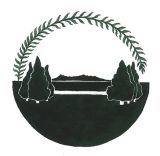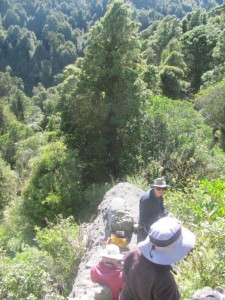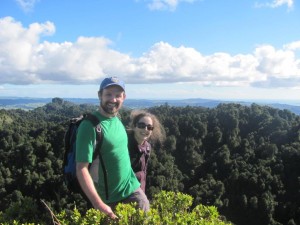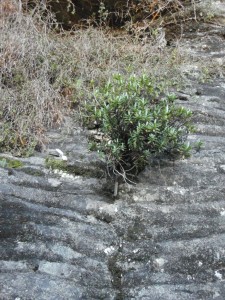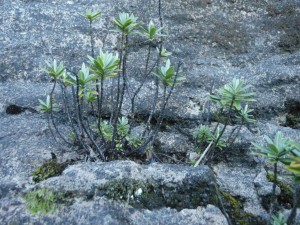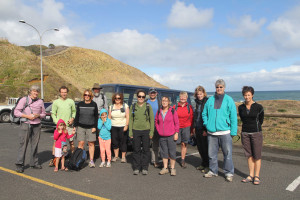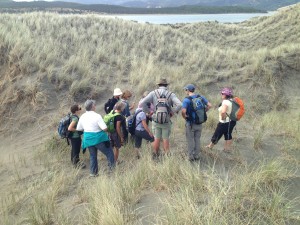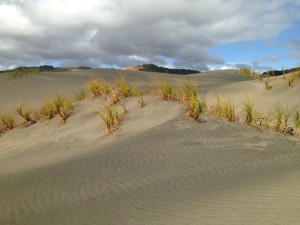Lunch time on Rock Peak
Eight keen botanists visited Rock Peak on a beautiful Saturday to seek out the locally uncommon Hebe scopulorum, a shrub known only from the limestone peaks from the Waitomo region. Thomas Emmitt led us through the private farm track and up to the peak. After descending to the river bottom following a farm track, we meandered our way to the top of the peak following a loosely defined track. The lower slopes were regenerating forest, but the higher we climbed the forest became more mature, where large tawa, hinau, and some rimu dominated the canopy. We compiled a species list, which will be posted at a later date. We also saw Asplenium lyallii, a limestone specialist, on the outcrop. It was a great day in the bush with good company and beautiful plants.
Daniel and Kara enjoy the view
Hebe scopulorum growing on limestone
Hebe scopulorum on limestone at Rock Peak, near Kawhia
